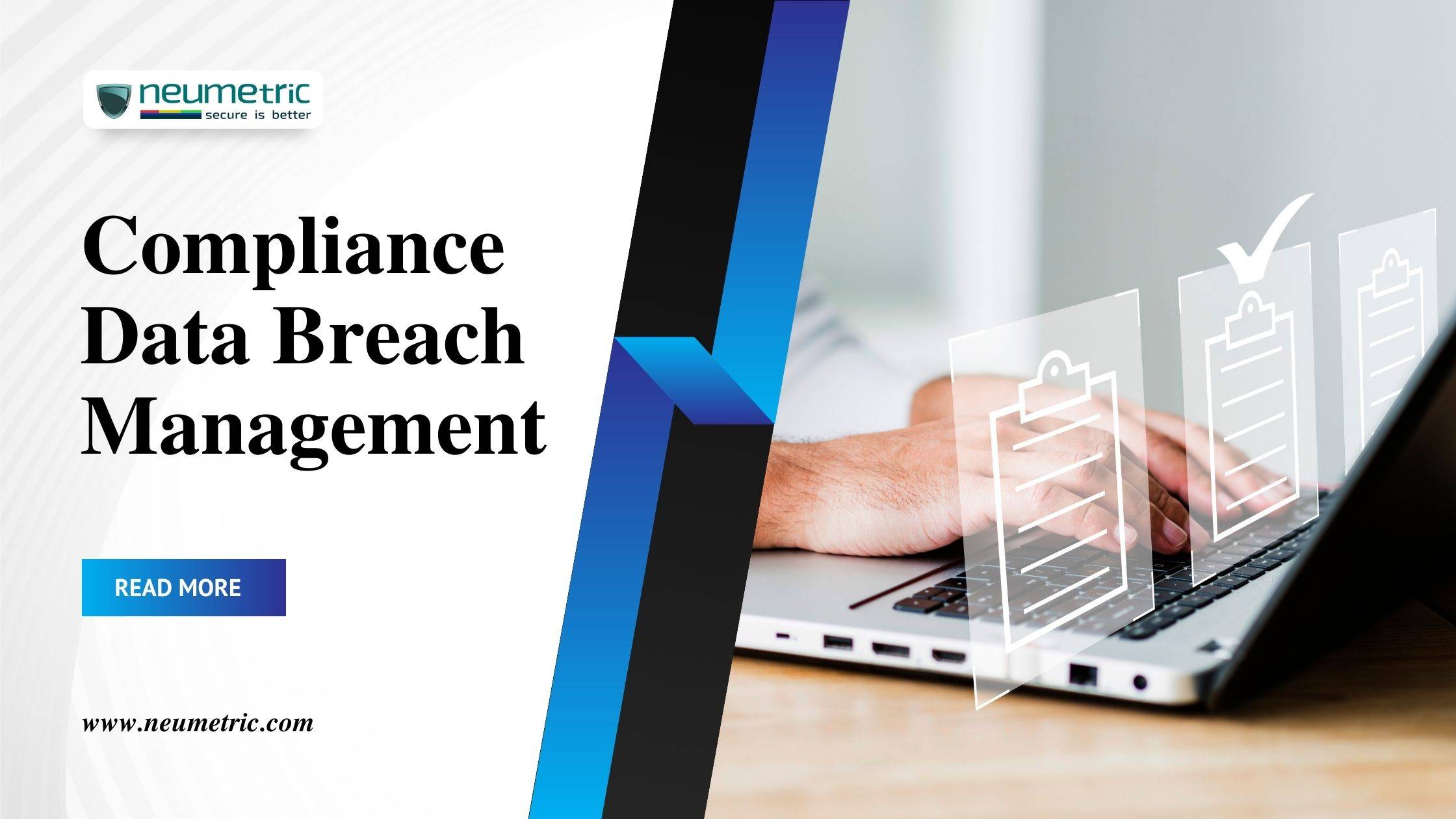Table of Contents
ToggleIntroduction
In an era dominated by digitization, the term “compliance data breach” has become more than just a buzzword—it’s a potential nightmare that businesses must be prepared to navigate. Understanding the nuances of compliance data breaches is essential in a world where information is both a powerful asset & a vulnerable liability.
Definition of Compliance Data Breach
A compliance data breach occurs when an organisation’s sensitive information, often subject to regulatory requirements, is accessed, disclosed or compromised in a way that violates data protection laws.
To put it simply, it’s not just about data being leaked; it’s about the breach of trust between organisations & the individuals or entities to whom that data belongs. Whether it’s personal information, financial records or proprietary business data, the fallout from a compliance data breach can be severe & far-reaching.
Significance of Data Compliance in Today’s Digital Landscape
In our hyper-connected digital landscape, data compliance isn’t a mere checkbox on a regulatory form; it’s a fundamental aspect of responsible business conduct. With an increasing number of high-profile breaches making headlines, consumers & regulatory bodies alike are demanding more stringent measures to safeguard sensitive information.
The significance of data compliance lies not only in avoiding hefty fines & legal repercussions but also in preserving the trust of customers, partners & stakeholders. In an age where information is a currency of its own, a breach can tarnish a company’s reputation, erode customer confidence & lead to financial losses that extend far beyond immediate regulatory penalties.
Understanding compliance regulations
In a world where our lives are increasingly digital, safeguarding sensitive information has become paramount. Let us now look at the intricate web of compliance regulations that organisations must navigate to keep the digital fortress intact.
Overview of major data protection regulations (e.g., GDPR, CCPA)
Enter the realm of GDPR, CCPA & a host of other acronyms that wield significant influence over how organisations handle data. The General Data Protection Regulation [GDPR] stands as a formidable force, demanding strict adherence to data protection principles. It grants individuals greater control over their personal information & casts a wide net, applicable not only to European businesses but any entity handling European citizens’ data.
On the other side of the globe, the California Consumer Privacy Act [CCPA] is making waves. Born in the tech epicentre, CCPA is California’s answer to the growing concerns surrounding data privacy. It empowers consumers with the right to know what personal information is collected & how it’s used, giving them the ability to opt-out of having their data sold.
Implications of non-compliance
The repercussions of failing to dance to the compliance tune can be severe, both financially & reputationally. Non-compliance isn’t just a slap on the wrist—it’s a financial tightrope walk. Fines, penalties & legal battles can drain resources faster than you can say “breach.”
More than the monetary impact, the trust that an organisation has built with its customers & partners hangs in the balance. A single breach can erode years of hard-earned trust, tarnishing a brand’s reputation. In a world where consumers are becoming increasingly discerning about where they place their trust, the fallout from a compliance misstep can be felt for years.
The evolving regulatory landscape
As if navigating the current regulatory landscape wasn’t challenging enough, the ground beneath is continually shifting. Keeping up with this ever-changing landscape is not just a compliance necessity; it’s a strategic imperative. Organisations must stay vigilant, anticipate regulatory shifts & be agile in their approach to compliance. It’s not merely about checking boxes; it’s about fostering a culture of continuous improvement & adaptability.
The anatomy of data breaches
Data breaches aren’t just about faceless hackers & lines of code; it’s about the very real vulnerabilities that can turn an organisation’s digital fortress into Swiss Cheese.
Common causes & vulnerabilities
Ever wondered how the bad guys sneak into the digital party? Well, it turns out there are a plethora of ways. Weak passwords, unpatched software & that pesky human error are like open invitations. Phishing attacks, where cyber-criminals pose as trustworthy entities to trick you into handing over sensitive info, are also a favourite trick.
Then there’s the classic “insider threat” – a disgruntled employee or just someone who clicked on the wrong link. It’s not always about shady figures in dark basements; sometimes, it’s the person at the next cubicle. It’s like locking your front door but leaving the windows wide open.
The role of technology in compliance data breach management
In this digital era, where the bad guys are getting craftier, our defences need an upgrade. Here’s how technology steps in to be the knight in shining armour.
- Leveraging advanced security technologies
By staying ahead of the curve with the latest security, tech organisations can create virtual Fort Knoxes for their data. From threat intelligence platforms to behaviour analytics, it’s about having eyes everywhere, making sure no digital miscreant slips through the cracks.
- The importance of encryption & access controls
Imagine your data is a secret recipe & encryption is the secret sauce. Encryption scrambles your data into an unreadable mess for anyone without the right decryption key. It’s like turning your confidential information into a secret language only you & your trusted folks can understand. Not everyone gets VIP access; you decide who gets into the exclusive areas. This means setting up user permissions, defining who can view, edit or delete.
- Incorporating Artificial Intelligence [AI] & Machine Learning [ML] for threat detection
Imagine an AI-powered guard dog that not only barks at intruders but can also distinguish between a mailman & a burglar. That’s the power of machine learning in threat detection. It analyses data patterns, understands what’s normal & raises the alarm when something fishy is afoot.
By incorporating these futuristic tech marvels into your security arsenal, you’re not just playing defence; you’re playing smart. The battle against data breaches isn’t about building higher walls; it’s about having smarter guards.
Conclusion
Here’s the real talk – the digital realm is like a game of chess & the bad actors are constantly plotting their next move. Staying ahead of evolving threats isn’t a one-time thing; it’s a perpetual chess match. As technology evolves, so do the sneaky tactics of cyber villains. New vulnerabilities pop up like daisies & our defence strategies need to adapt. Think of it like upgrading your home security system. You wouldn’t rely on the same setup from a decade ago, right? The same goes for data protection.
By making compliance a proactive part of your organisational DNA, you’re not just meeting legal requirements; you’re future-proofing your business against the unpredictable twists & turns of the cybersecurity rollercoaster.
FAQ
What steps can my small business take to protect against data breaches without breaking the bank?
There are budget-friendly moves you can make. Start by beefing up your password game, train your team on cybersecurity basics & consider using free or low-cost security tools. It’s like putting your data on a shoestring budget – not fancy, but effective.
How can I convince my team that data compliance isn’t just another bureaucratic headache?
Ah, the eternal struggle of making compliance cool. Here’s the scoop – it’s not about red tape; it’s about safeguarding our digital hideout. Break it down for the squad. Talk about real-life examples, the fines that can hit the wallet & the trust we stand to lose. Compliance is like the superhero cape for our data – it might not be flashy, but it’s essential.
Is it really worth investing in AI & machine learning for our security setup or is that just for the big leagues?
Great question! While they may sound like tech wizardry, they’re becoming more accessible. They’re like having a superhero guard dog that doesn’t sleep on the job. It’s an investment, sure, but one that pays off in preventing sneaky cyber villains from crashing your digital party.





